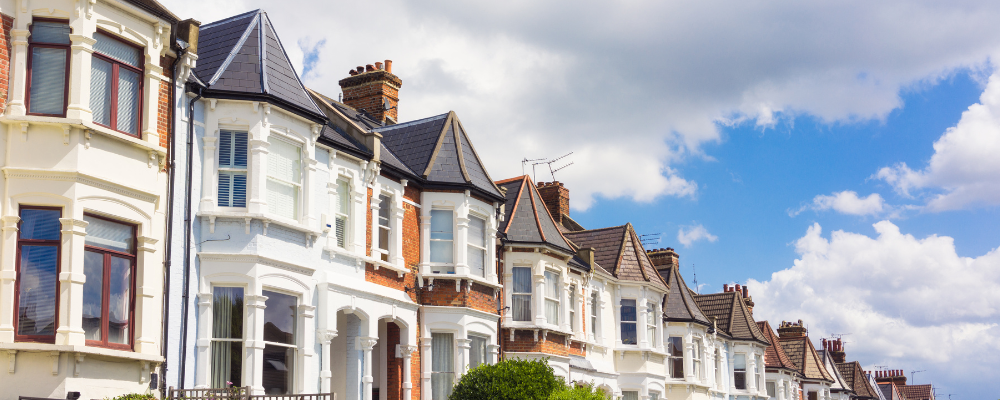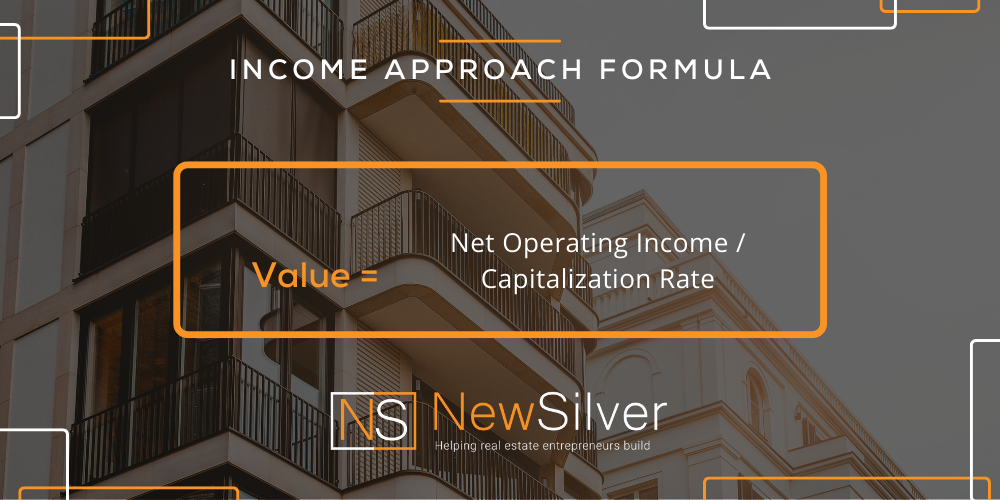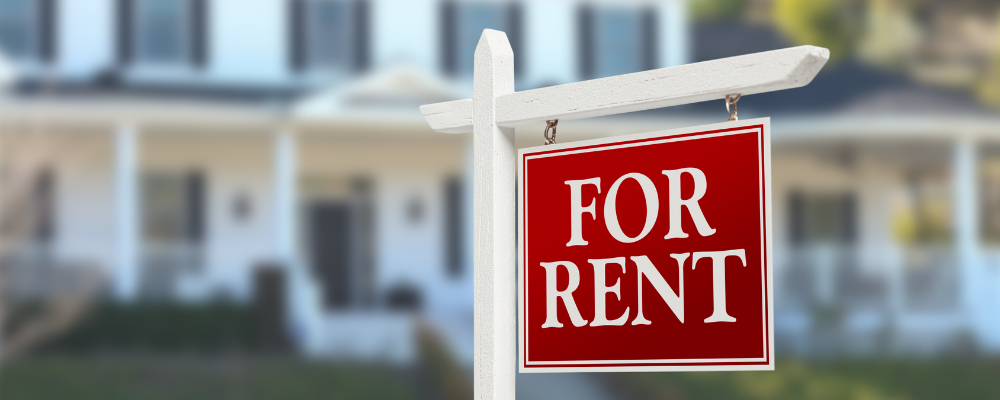Short Summary
When it comes to working out the value of a property, there are 3 methods that are tried and tested: the income approach, the cost approach and the sales comparison approach. Get a closer look at the income approach appraisal method in our beginner’s guide below.
Table of Contents
A vital part of the real estate investing path is learning how to analyze the value of investment properties. Making a profit from an investment property involves knowing how much income the property could potentially bring in, in terms of rental and appreciation in value. So, if you’re buying or selling a property, knowing how to correctly value the property, in other words finding the appraised value, can help you make more informed decisions on investment properties.
One of the common ways to do this is by using the income approach appraisal method. Here is our beginner’s guide on using this method to determine a property’s value.
What is the income approach appraisal method?
There are 3 main property appraisal methods to determine value, these are: The income approach, the sales comparison approach and the cost approach. In this article, we’ll be focusing on the income approach appraisal method.
In a nutshell, the income approach is a property appraisal method that revolves around the income that the property generates. This method is therefore predominantly used for rental properties and commercial properties. There are two ways to work out a property’s value using the income approach, and these are: the direct capitalization method and the yield capitalization method. We’ll explore these in more detail below.

How the income approach works
The income approach takes into account all the income that the property will generate over the time that you own it. Which means that you’ll need to estimate this and factor in all the income-generating aspects of the property that can extend beyond just the rent.
First, you’ll need to work out the Net Operating Income (NOI). You’ll do this by gathering all the income and expense reports for the property, and similar properties in the same area to do a comparison. There are a few steps to this:
- Work out the gross income that a property could earn if it was occupied 100% of the time.
- Take a look at properties in the area and estimate the vacancy rate of the property and work out what this would cost you. Mark this is a loss against the income that the property will be generating. This will give you the effective gross income.
- Work out the expenses of the property which include property taxes, mortgage payments, utilities and so on.
- Subtracting the total expenses of the property from the effective gross income will give you the NOI that you’re looking for.
Both the direct capitalization method and the yield capitalization method are then used to determine the property’s value in this approach. Which means that both the current cash flow and the year-over-year rent increases will be taken into consideration.
Income approach formula
Property Value = Net Operating Income / Capitalization Rate

Once you’ve worked out the NOI, you’ll need to calculate the cap rate of the property, which you can do by looking at market sales of similar properties in the area that have sold within the last 6 months. You can work out the cap rate on these properties to figure out what your own will be.
Once you’ve worked out the NOI and cap rate, you can divide the NOI by the cap rate to work out the home’s value.
Direct Capitalization Method
The Direct Capitalization method uses a specific period to work out what a property’s value will be. The method includes factors in comparable properties in the area, using the same criteria to determine the NOI and then the cap rate, using the market and asset class associated with the properties. The final step is to divide the NOI by the cap rate to get the resulting value.
Direct Capitalization Method Example
Let’s say you are buying a property that should generate $300,000 in revenue, and the operating costs are $70,000. You work out the cap rate to be 5% on this property.
Step 1: Subtract the operating costs from the revenue will give you the NOI.
$300,000 – $70,000 = $230,000
Step 2: Divide the NOI by the cap rate as a decimal.
$230,000 / 0.05 = $4.6million
So, by using the Direct Capitalization Method, the property’s value is $4.6million.

Yield Capitalization Method
The Yield Capitalization method uses the NOI for a specific investment holding period, and this method takes into account the changes in vacancy rates, operating expenses and rent prices that may occur during this period. These factors can impact the resale price of the home and are therefore important to incorporate. The method results in the value of the property and the expected resale value of the property at the end of the holding period.
Yield Capitalization Method Example
Let’s say you are looking at purchasing a house that should bring in $300,000 in revenue over the period that you own it, and you anticipate that you’ll have the property for 5 years.
Step 1: Work out a pro-forma cash flow statement by using the potential gross income, the vacancy rate and the operating expenses. Let’s say the vacancy rate is currently 8%, the potential gross income is $300,000 over the next 5 years, and the operating expenses work out to $80,000 for the same period.
Step 2: Factor in the potential changes to rent price, vacancy rates and figure out the capitalization rate. For instance, the vacancy rate may be 8%, but in the next 2 years it could be predicted to drop to 5%.
Step 3: To work out the value in each year across the 5-year holding period, you will take the year you’re looking for (let’s say: year 2), take the gross income and subtract the amount you’d lose from vacancies, and then subtract the operating expenses from that to be left with your NOI. The value of the house in a specific year is the NOI from the year after, divided by the capitalization rate. For example, for year 2 the value of the property would be the NOI from year 3, divided by the cap rate.

Other ways to value real estate
Cost approach valuation method
For investors who are doing ground-up construction projects or buying properties to rehab on land that is more affordable, the coast approach may be your best bet. This method works by evaluating the value of the land by looking at comparable properties in the area and calculating the total cost of the construction or rehab project. The cost of the depreciation accrued over time is subtracted from this, and the land value is then added onto it, to arrive at the value of the property.
Comparison approach valuation method
This approach is centered around comparable properties, which are similar properties in the same area. Properties that are a similar age, size and have practically the same features that have sold recently in the same area are used as the foundation to determine a property’s value. Properties will never be 100% the same, so it’s important to factor in any differences that could impact the value of the property.
Which appraisal method should you use?

The income approach is suited to investors who are buying a rental property because it uses the net operating income of the property, along with the capitalization rate, to arrive at a valuation.
For investors who are purchasing single-family homes, the comparison approach is quite effective as there are typically quite a few comparable properties in any given area that are single-family homes.
For investors who are building a house from the ground-up or doing a full rehab project on a house, the cost approach method makes the most sense. This method looks at the constructions cost, as well as the cost of the land, and subtracts the property’s depreciation. This is also often used for properties that are not easily sold.
Final thoughts
While each appraisal method has its merits, as investors, you should choose the method that fits your investment strategy the best and that will provide you with the most accurate valuation. The factors to consider when making your choice are; the type of property, what the property will be used for and how easily you can get access to information. The income approach is a great method for those who are investing in rental real estate.



